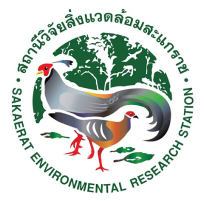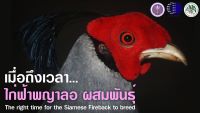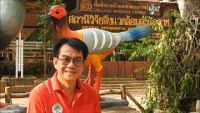บทคัดย่อ :
The study in the condition of undergrowths and the forest fire in the dry deciduous dipterocarp forest can be summarized as follows:
1) Ya-phek, the main undergrowth in the vicinity of the Station com- mences its vegetative growth in April after being burnt down by the annual ground fire in the hot dry season; the vegetative growth stops in November, when the moisture content of the soil is lowest.
2) Towards the end of growing season the moisture content of ya-phak decreases from November onwards, resulting in the desiccation of leaves and stems. During December-January most of the arborescent species in the dry deciduous dipterocarp forests shed their leaves, exposing the under- growth to the direct solar heath, which is quickening their desiccation.
3) The daily moisture content of ya-phek is variable throughout 24 hr the lowest is recorded between 1400-1600 hr, when the temperature and the solar heath are also at their peaks.
4) There occurred annual ground fire in the vicinity of the Station during January-February, deliberately caused by man, when the moisture content of the undergrowth is lower than 35%.
5) The undergrowth is inflammable when its moisture content is at 40% or lower; the rate of conflagration is 69.65 m/hr at a moderate wind speed.
6) After burning some parts of the undergrowth are left over, such as stens of seedlings of arborescent species and some ya-phek. The amount of left-overs is 2-4,4% (dry weight) of the total biomass before firing.
เอกสารอ้างอิง :
Nalamphun, A., Santisuk, T., & Smitinand, T. (1974). The preliminary study on forest fire in dry deciduous dipterocarp forest at ASRCT Sakaerat Experiment Station. Report, 27(8), 3.



